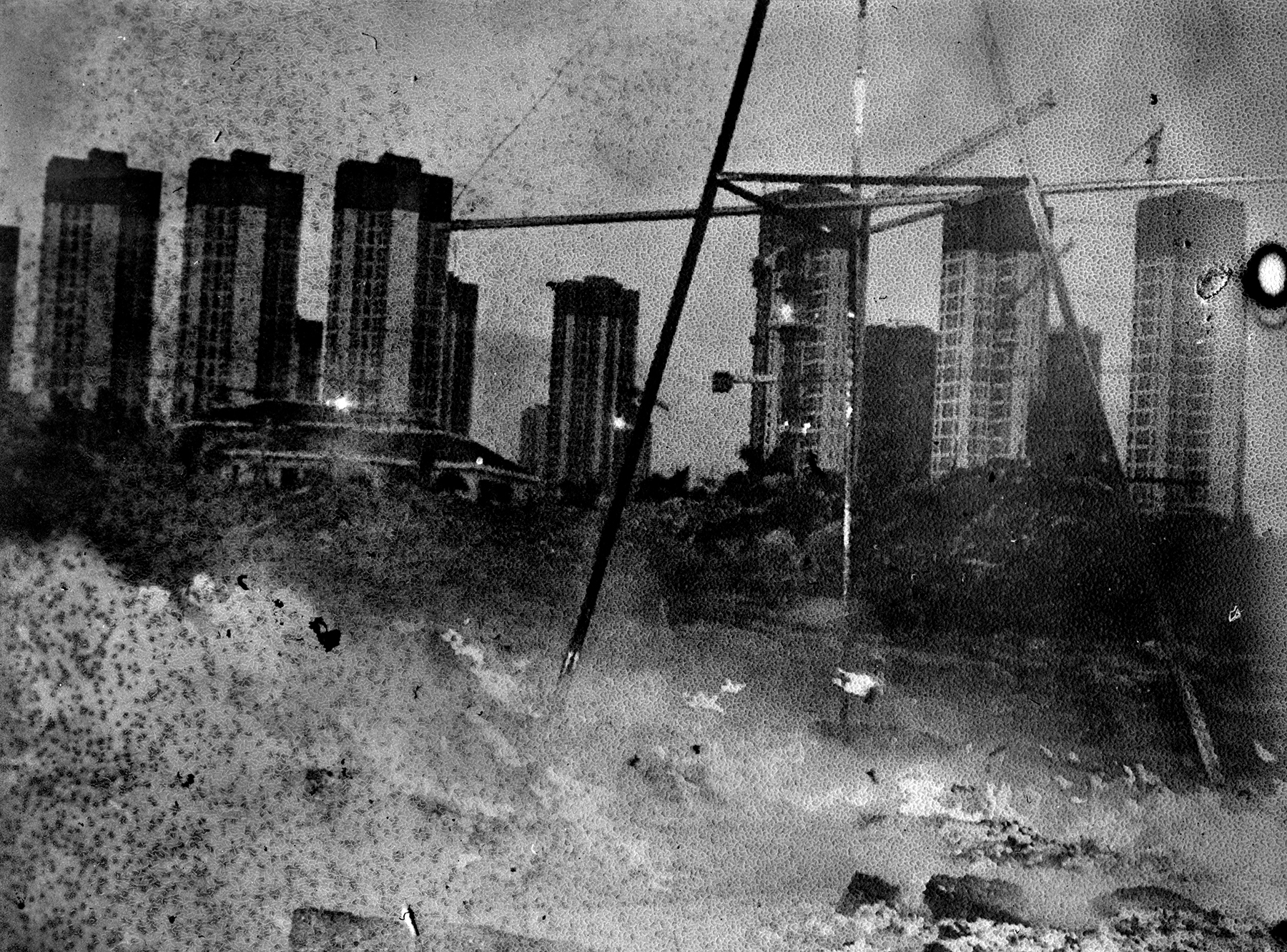"Abanga-do," the Japanese loan word derived from "avant-garde" has a relatively wider usage than the original French term. The political philosopher Henri de Saint-Simon (1760-1825) originally coined "avant-garde" as a rallying cry for art of the early 19th century to be a medium of social reform. In Japan it's currently used for anything slightly kooky or off-kilter. That's fair enough, even apart from the natural evolution of language, "avant-garde" is a slippery term.
"Photography/Magic" is a small selection of contemporary photography at the G/P Gallery in Ebisu, and it evokes a sense of the avant-garde in a couple of ways. Perhaps most obviously, the artists experiment with photography with an eye on what is possible with current technology; the "content" of many of the works is the process. Daisuke Yokota uses a combination of analog and digital processes to create black-and-white images that have the quality of abused and forgotten snapshots. Their surfaces are scarred and pitted with burns, and the subject matter appears dimly as though through a foggy veil. They work incredibly well at evoking mournfulness and abjection.
Takaaki Akaishi's brightly patterned polyhedra appear to be computer generated, but are in fact photographs of projections beamed onto thin film formed into objects. Enigmatic and cool, Akaishi's work in this exhibition is the result of a number of fairly involved and self-referential stages; trompe l'oeil for the 21st century.


















With your current subscription plan you can comment on stories. However, before writing your first comment, please create a display name in the Profile section of your subscriber account page.